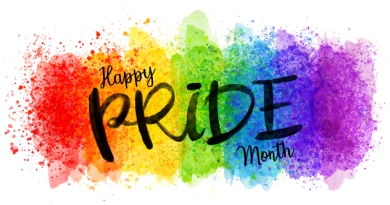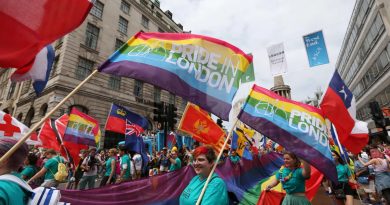International Holocaust Remembrance Day
The United Nations General Assembly designated January 27, the anniversary of the liberation of Auschwitz-Birkenau, as International Holocaust Remembrance Day.
Now, International Holocaust Remembrance Day honors the six million Jewish victims killed in the Holocaust. The UN “urges every member state to develop educational programs to help prevent future genocides.”
So, the theme of this year’s Holocaust remembrance and education is “Memory, Dignity and Justice” and encompasses safeguarding the historical record, remembering the victims, and challenging the distortion of history often expressed in contemporary antisemitism. It encourages action to challenge hatred, strengthen solidarity and champion compassion, according to the UN. (sources: UN, Hindustan Times)
Then, we are sharing some resources below related to the Holocaust and International Holocaust Remembrance Day, including links to virtual programs and exhibits, stories from survivors, museums, significant locations, and more.
In conclusion, we invite you to reply to this message with any additional resources, reflections, stories, etc. to share with our community of colleagues in the spirit of enhancing awareness and understanding.
The video for not forget
This 38-minute film introduces the history of the Holocaust. It begins by looking back at the major changes from 1918 to 1933. That period created the political climate for the birth and rise of the Nazi Party in Germany. It explores the basis for the party’s support among ordinary Germans and the military, government, and business establishment before and after Hitler was appointed chancellor in January 1933.
After 1933, Nazi leaders used violence and intimidation, propaganda, laws and decrees, and parliamentary maneuvers to quickly destroy the remains of democratic rule. Having established a dictatorship, leaders began pursuing ideological goals. These included the purification and strengthening of the “superior” German “race” and the return of Germany to great power status through economic revival and the build-up of the military. Jews, who were viewed in Nazi ideology as a separate and dangerous “race,” went from being German citizens with full equal rights to outcasts.
They were pressured to immigrate and excluded from the racially based “people’s community” that gave many Germans, especially youth, a sense of belonging. Other excluded groups included Roma, persons with disabilities, gay men, Jehovah’s Witnesses, and political opponents. During World War II, which began in 1939, German military conquests and alliances endangered Jews living in countries across German-dominated Europe.
The German invasion of the Soviet Union in summer 1941, envisioned by Nazi leaders and the German military as a “war of annihilation,” was a key turning point on the path to the genocide of Europe’s Jews. The murder of 6 million Jewish men, women, and children required the active participation or acquiescence of countless Germans and Europeans from all walks of life.
Information on International Holocaust Remembrance Day and the Holocaust:
- World Jewish Congress: https://weremember.worldjewishcongress.org/ https://aboutholocaust.org/en
- UNESCO: https://en.unesco.org/commemorations/holocaustremembranceday
- Holocaust Memorial Day Trust: https://www.hmd.org.uk/what-is-holocaust-memorial-day/ https://www.hmd.org.uk/
- US Holocaust Memorial Museum: https://encyclopedia.ushmm.org/content/en/article/introduction-to-the-holocaust
Programs and Events (virtual; includes Jan 27 live, future and recorded events)
- UN: https://www.un.org/en/outreach-programme-holocaust/page/2022
- Includes Holocaust Memorial Ceremony on January 27 at 4:00pm BST/11:00am EST via UN Web TV and Seminar on Legacy of Medicine During the Holocaust at 5:00pm BST/12:00pm EST (register here)
- UNESCO International Day of Commemoration in Memory of the Victims of the Holocaust (5:00pm BST/ 12:00pm EST): https://youtu.be/UcXlkNEP3i4
- US Holocaust Museum: https://www.ushmm.org/online-calendar
- Holocaust Memorial Day Vigil (Sheffield): https://www.hmd.org.uk/activity/holocaust-memorial-day-vigil/
- David’s Story (Feb 1): https://www.hmd.org.uk/activity/davids-story-online-event/
Stories from Holocaust Survivors: https://www.youtube.com/channel/UC15plGNCMRkMmREMNkbYJPA?app=desktop
Highlighting Lily Ebert, using TikTok to share about the Holocaust
Lily Ebert, 98, is a Holocaust Survivor, who has recently been known for sharing her experiences on the TikTok platform alongside her great-grandson, Dov Forman.
- Lily Ebert’s message on Holocaust Remembrance Day on TikTok: @lilyebert
- Profile: https://youtu.be/cl9_Rnzxq6s
- Good Morning Britain interview: https://youtu.be/dtRGRmEdHCY
- CBS Mornings interview: https://www.cbsnews.com/video/holocaust-survivor-lily-ebert-98-takes-to-tiktok-to-share-her-story/
Children’s narratives during the Holocaust as told through diaries: https://encyclopedia.ushmm.org/content/en/article/anne-frank-diary




